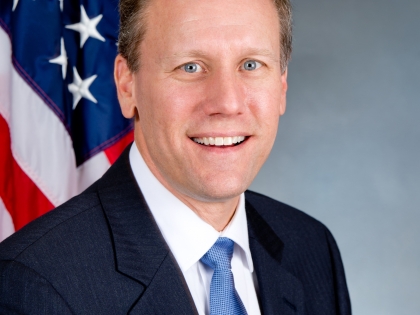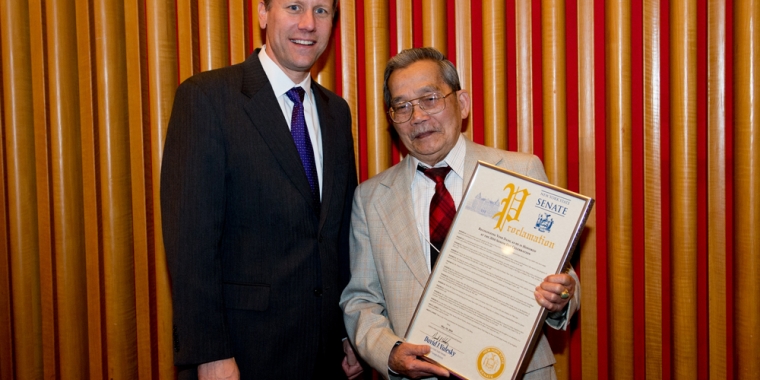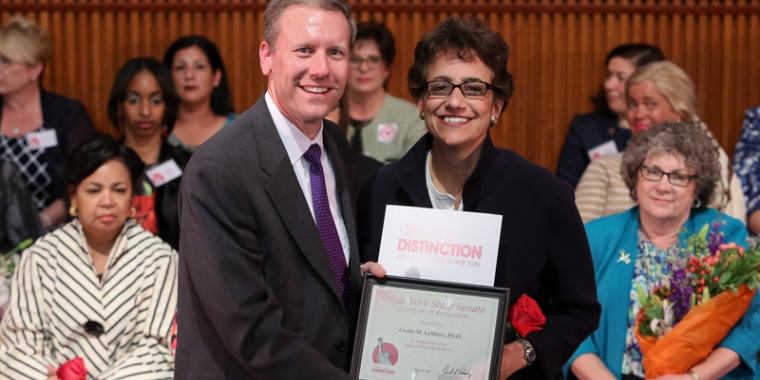
IDC Calls for End to Deferral of Key Upstate Development Program
David J. Valesky
March 16, 2011
Historic Rehabilitation Tax Credit to Leverage $461 M in Upstate Investment; Create 1,600+ Jobs
The Independent Democratic Conference today called for the full reinstatement of an economic development program that would create more than $460 million in private investment and more than 1,600 good-paying jobs in Upstate New York.
The Historic Rehabilitation Tax Credit, sponsored by IDC member Senator David J. Valesky, (D-Oneida), allows for an investment tax credit in order to spur development in distressed areas.
The credit is equal to 20 percent of the costs of repairs to qualified historic structures and is capped at $50,000 for residential properties and $5 million for commercial properties that is to be paid out over 5 years. The program, which was modeled after successful programs in other states, was signed into law in 2009.
However, under the 2010 budget, historic rehabilitation tax credits above $2 million will be deferred until 2014. With the credit set to sunset in 2014, this delay effectively kills the program as an economic development tool.
“Reinstatement of the Historic Rehabilitation Tax Credit will translate into direct and immediate economic benefits statewide, and especially Upstate, through new investment and job creation,” Senator Valesky said. “This program can reignite economic activity on our Main Streets, and bring people and businesses back to our communities.”
Studies show that for every $1 million paid through an historic rehabilitation tax credit, $1.9 million in economic activity is generated.
In just 10 upstate counties alone, the IDC – using data provided by the New York Preservation League – has identified $461 million in economic investment and 1,644 jobs that could be leveraged with this credit.
County Investment Cost of Renovated Projects Jobs to be Created
Albany $67 million 300
Erie $221 million 655
Saratoga $25 million 150
Dutchess $24 million 145
Onondaga $87.4 million 175
Niagara $14 million 120
Chautauqua $7 million n/a
Steuben $5.7million 76
Tompkins $3.1 million 23
Monroe $6.8 million n/a
10 Counties $461 million in possible investment 1644 Jobs Created
A list of specific projects is included in the IDC’s companion report: “Investing in our Upstate Economy: the Historic Rehabilitation Tax Credit.”
The deferral, at the IDC's request, was included in the Senate budget resolution and is part of Governor Cuomo's “NY Works Agenda.” It was not, however, part of the Assembly budget plan.
“This is much needed program that will help create jobs and put people back to work,” Senator Diane Savino, (D-Staten Island/ Brooklyn), said.“While new construction costs are usually split between materials and labor, when you rehab an historic structure, 60 to 70 percent of costs are spent just on labor. These are local, good-paying jobs that will help a segment of the workforce that is experiencing 25 percent unemployment.”
New York's program is similar to programs in 30 other states. Between 1997 and 2006, nearly $952 million in private investment was leveraged by the state tax credit program in Virginia, while a 2009 a study by the Abell Foundation showed that $342 million in state tax credits in Maryland has leveraged over $1.5 billion in rehabilitation expenditures -- a threefold return on Maryland’s investment.
“This is a proven model of success that has never been given the the chance to succeed,” said Senator Jefferey D. Klein, (Bronx/ Westchester).“Ending the deferral of this vitally important step toward putting New York back on the right track.”
“The Historic Rehabilitation Tax Credit Program is an important tool not only to preserve our historic buildings but also to stimulate our local economies and create much needed jobs,” Senator David Carlucci (D-Rockland/Orange) said. “Reinstating this program will provide relief to local residents and small businesses during these difficult economic times.”
While Upstate stands to benefit the most from this program, there are also approximately 16,200 properties in New York City that qualify for these credits. Distressed areas are defined as being located within a Census tract identified at or below 100 percent of the median family income.
Daniel Mackay, Director of Public Policy for the Preservation League of New York State, said: “Senator David Valesky and fellow members of the Senate Independent Democratic Conference have shown critically-needed leadership on economic and community redevelopment issues by securing language in the Senate Budget bill that removes the deferral provisions from the New York State Rehabilitation Program. With the full value of the credit restored, this program will finally have a chance to deliver significant private investment, jobs, and tax base improvements to distressed communities throughout New York State. We urge the Governor and Assembly to continue their commitments to this program by including this language in the final budget agreement.”
Robert Simpson: President and CEO of CenterState Corporation for Economic Opportunity, Syracuse’s Chamber and regional development organization, said: “At a time when New Yorkers need jobs, this program will support hundreds of millions of dollars in private investment and create good paying construction jobs across the state. Cranes are ready to go up. Our state’s cities are in need of investment. We urge the Governor and the Legislature to include this targeted, fiscally-responsible development incentive in the final state budget.”
Murray Gould, founder of Port City Preservation, said: “The deferral program has all but stopped the revitalization of our historic buildings. These projects stimulate economic development along Main Street in our towns and villages. At a time when job creation is paramount, entrepreneurs willing to invest in our communities have their hands tied because of this deferral. We are turning away investment.”
Share this Article or Press Release
Newsroom
Go to NewsroomPhyllis Mills Creamer
May 20, 2016

Linda M. LeMura
May 11, 2016

Sen. Valesky Honors Senior Citizens
May 11, 2016

